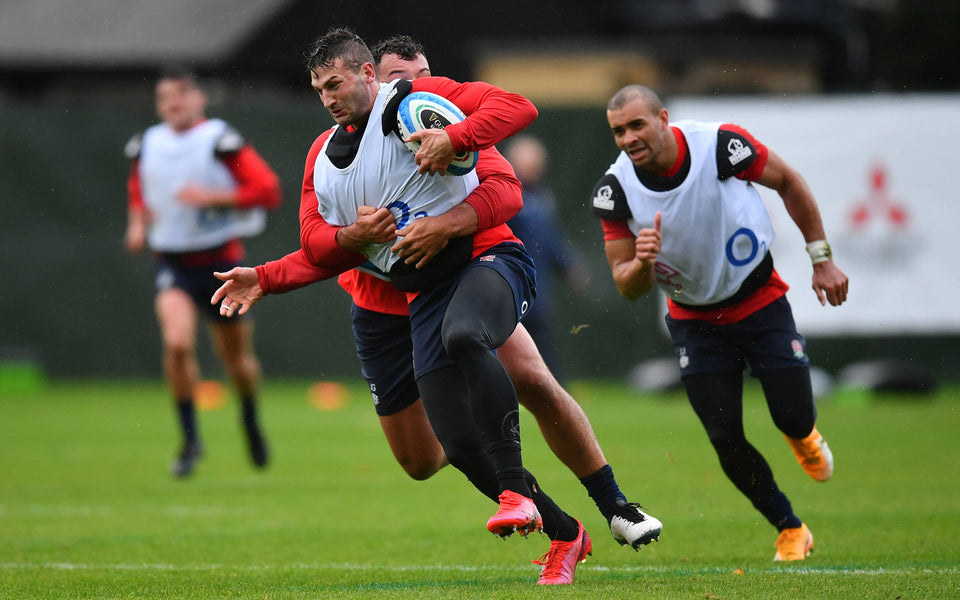As a young sports science student many moons ago, I attended an S&C seminar, looking at how various American sports condition their athletes. One of the coaches used a line that has stuck with me to this day. He said…
"For an athlete, the most important ability is AVAILability"
It's so true. Nowadays, arguably more so. With playing contracts and prize money worth potentially tens of millions per year, being available is a vital from both a sporting and financial point of view. Knowing that, there's a temptation for medical departments to bring players back to full competition quickly, but there's a significant amount of data that suggests this isn't just a bad idea, it's actually more damaging in the long run.
Time to read: 5 minutes
Intermediate - Expert
Key Points:
- The problem of recurring injuries
- The impact of sports medicine and physiotherapy
- The guiding principle for recovery
- Assessing match readiness post-injury
"For an athlete, the most important ability is AVAILability"
Recurring injuries – an ongoing problem
There are numerous studies pertaining to the recurring injury problem in professional sport, suggesting it's a big problem. In a study across 282 Australian footballers who suffered 469 injuries, nearly 16% of them were considered a recurrence [1]. This suggests that either previous injury sites are generally more susceptible to future damage, or in a rush to return players to competition, full rehab and recovery hasn't been completed.
This data is echoed in the professional Rugby Union. Data shows that recurring injuries accounted for 18% of the total injuries suffered by the playing squad. Furthermore, recurrent injuries are typically more severe, resulting in 27 days of absence on average, as opposed to 16 days for new injuries [2].
Can sports medicine and physiotherapy deliver?
The next question is what can we do about the problem? Does an investment in a higher-level medical department result in better recurrent injury rates in future? To answer this question, we can look towards a comparison study between different levels of football and the recurrent injury rates…
A 2016 study analysed injury data from different levels of professional football. There were 43 top-level European teams, 19 Swedish premier division teams and 10 Swedish amateur teams included in the study. In total 332 seasons' worth of data was assessed. There was a total of 13,050 injuries, 2449 (18.8%) of which were recurrent – this is broadly in line with other data from other sports.
Where the study gets interesting is when you consider the reduction of recurring injuries the higher up the scales you go. In the study, recurring injuries accounted for 35.1% in the amateur cohort, 25.0% in the Swedish elite cohort and 16.6% in the European cohort [3]. This suggests that the clubs with the ability to invest more heavily in sports science, sports medicine and strength and conditioning were better able to protect their players from recurring injuries.
Improving speed and effectiveness of recovery
Whilst it's impossible in a blog post to outline recovery and rehab strategies for injury recovery, what we can do is take a birds-eye view of the problem and see what the data shows when it comes to successful recovery from injury.
A 2009 transitional model outlining a transition from medical care to performance care suggests the following stages [4] …
- Medical treatment
- Rehabilitation
- End-stage rehabilitation
- Generic into specific development
- Sports-specific development
This provides clinicians with an evidence-based roadmap for taking players from ‘injured' to ‘match fit'. The sheer number of recurrent injuries across a wide range of sports suggests that there's a significant difference between simply being pain free/uninjured and being fully ready to compete at the highest level of sports.
Using this model as the guiding principle for recovery outlines the stages that an athlete will need to go through to recover fully and reduce the chances of recurrent injury.
How clinicians can assess match readiness post injury
Fundamentally this is down to data gleaned from individual testing. By understanding an athlete's ‘normal' numbers – strength, VO2 max, heart rate data, range of movement etc. you'll be able to assess their proximity to match fitness before they're allowed to play and compete again. The more data you have on players, the better.
Ensuring the athlete has returned to their full movement, full strength and full cardio capability is fundamental to ensuring they're less likely to suffer recurrence of injuries.
Using infrared to improve rehab
Blood flow is fundamental to nutrient delivery, oxygen delivery, tissue elasticity and movement efficiency. Players can achieve all these benefits simply by wearing KYMIRA® clothing during their rehab and competitive sessions. It's a passive technology that gets to work within minutes of being worn.
For more information on the science of KYMIRA® clothing and how infrared fabrics work, click here .
In the UK, EU and other territories, KYMIRA® clothing has class 1 medical device status, meaning it has passed various independent laboratory assessments to check its efficacy. KYMIRA® technology has been worn in Rugby World Cup finals, Olympic stages and at various British, European and World level competitions. It's trusted by the professionals at the most important moments.
To see the KYMIRA range, click here.
References
[1] https://bjsm.bmj.com/content/48/17/1276
[2] https://bjsm.bmj.com/content/39/10/757
[3] https://pubmed.ncbi.nlm.nih.gov/27015858/
